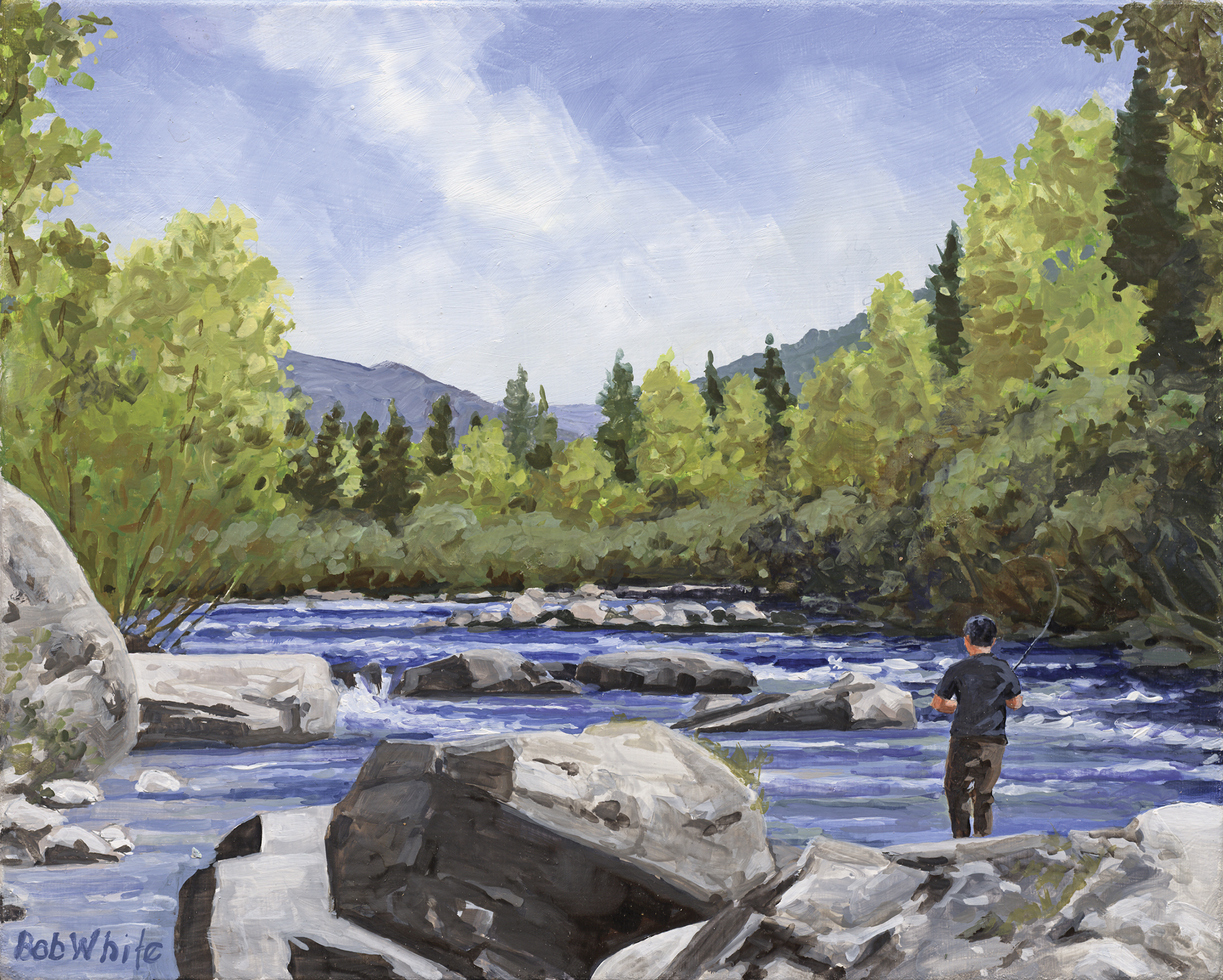
20 Aug Fish Tales: Half Formed
WHEN I WAS 13, my mom, feeling guilty for leaving home when I was 9, asked me the one thing I wanted to do in the coming summer. I said I wanted to join my best friend, Taylor, at summer camp in Wyoming. So she scraped up the money and sent me there, to Teton Valley Ranch Camps on the old Wilson Ranch in the town of Kelly, on the Gros Ventre River.
It was my first time in an airplane, getting to Jackson from Connecticut via Salt Lake, my first time on a backpacking trip, my first time playing harmonica and guitar, my first time throwing a lariat. And it was my first time fishing a Western river. By that age I had taught myself the rudiments of fly fishing and fly tying (no one in my family fished) on the small tree and brush-lined brooks near my home. I dreamed of fishing the creeks and rivers of Wyoming for cutthroat trout, putting my own flies I’d innovated and tied to the test.
But the five-week boys’ season at camp, which began in late June, it turns out, was not the best time for fishing. It was peak snowmelt, and the rivers were churning milky with suspended silt — not crystal-clear as I had imagined. I’d have to come back in August or September, I was told, to see those conditions. I didn’t really care how at that point, but I wanted to catch a cutthroat trout and paint it. I had never seen one before, and imagined it to be one of the most beautiful creatures.
The campfires, the singing, the horsemanship, the backpacking, the glacading (sliding down snow in the high country on our ponchos), the new friends I made and of course the stunning view of the snow-covered Teton range, definitely rounded out my character at a time in my life when there was fishing, fishing, fishing and everything else. I let go of my fantasies of cutthroats for the first three weeks, but they were ever-present in my dreams.
ONE MORNING, a counselor named Shane took my friend, Taylor, and me out on the Gros Ventre River fishing before breakfast. The river was still rough and angry, but he showed us that if you worked the eddies behind the large boulders, and some holes tight up against the riverbanks, that you had a chance of hooking a fish. That morning I did. I hooked a good fish at the bottom, right behind a long, flat boulder, just as Shane had taught me. It soon left the eddy and headed down the roiling currents, and I did my best to follow, running along the bank. Taylor was with me, and Shane was nowhere to be seen. Luckily I was able to get the fish, which felt to be one of the biggest trout I’d ever hooked at that time, into a big, quiet slough, and shortly, up and flopping on a gravel bar.
To get the fish out of the water, I had just run backwards with the rod, hardly reeling in, but could see well from 20 feet away, a big, bright orange-and-yellow fish moving dangerously close to the water’s edge. My friend Taylor was there to jump on it, he had it in his hands a few times. The hook came out. And then, suddenly, it was out of Taylor’s hands, its thick back cutting a V-line through the shallow water back into the river. I was stunned and so angry at Taylor. I wanted a picture of that fish! I needed proof that I’d caught it! I’d barely seen it and now it was gone.
Shortly, Shane came down the riverbank to join us again. We told him the story, but how would anyone understand? The fish must have been 18 inches.
Taylor said he was sorry. I told him he’d done it on purpose, and then I apologized for suggesting that. Still, I had a hard time forgiving him for his slippery fingers. Over and over, while lying in my bunk, or in my sleeping bag by a campfire, I imagined a different scenario, where I put down my rod and leaped onto the fish, smothering it — reds, golds, yellows, covered in fine black spots — so it couldn’t go anywhere. “Why didn’t you grab it yourself?” I asked myself. “I thought Taylor had a handle on it,” I responded.
WE CAUGHT OTHER FISH IN THOSE WEEKS, sure, but no native cutthroats. On one backpacking trip to the headwaters of the Gros Ventre, we caught big brook trout in an emerald lake. On another day trip we caught grayling in a small pond called Toppan Lake, choked with lily pads (years later it was discovered that the grayling introduced to this pond may have come from a now-extinct population of grayling native to Michigan). But as years passed like a lightning storm at altitude, the fish I remember most is that fish on the Gros Ventre. It still lives in my imagination, half-formed. There are images, flashes, but the imagination makes that particular fish more vivid, perhaps more than it ever had been in reality.




No Comments